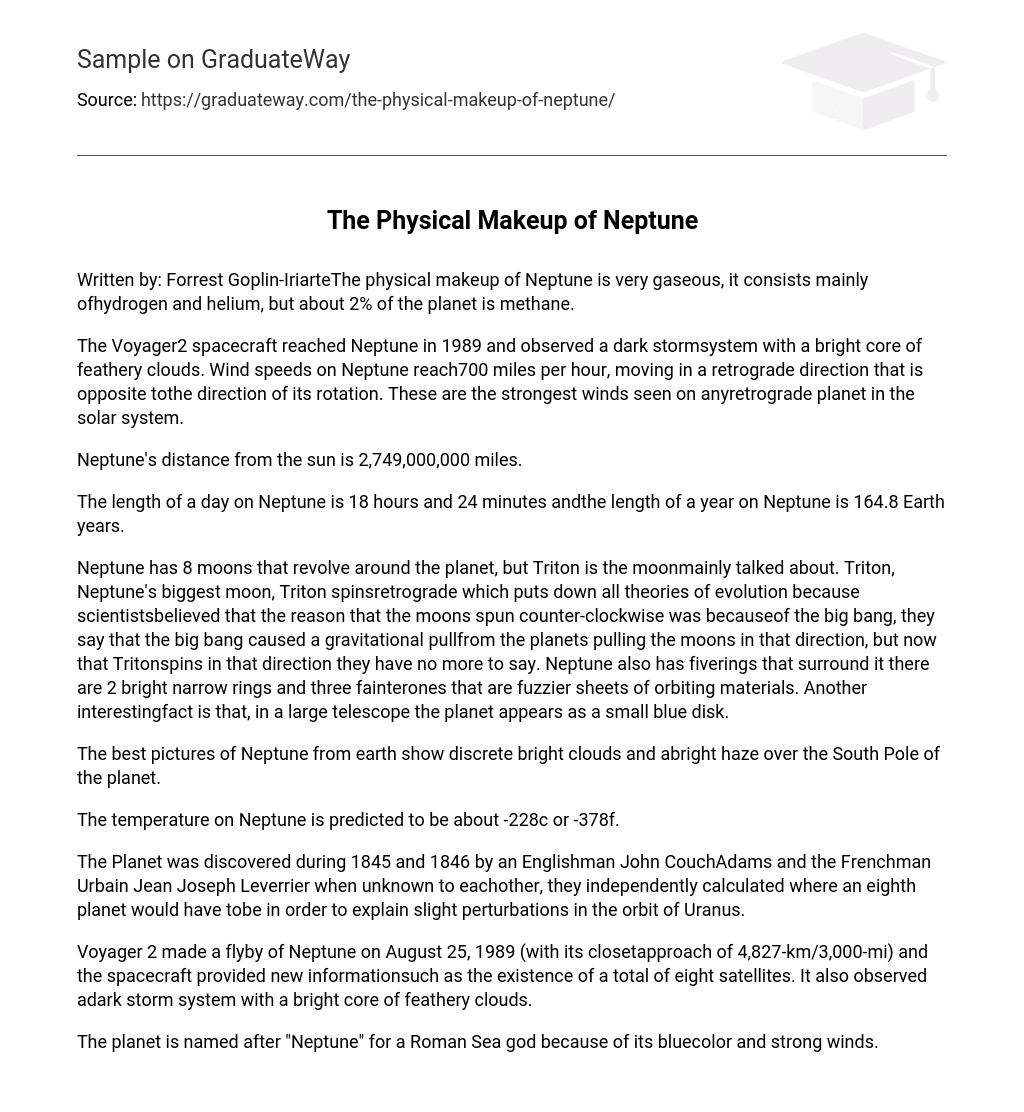Written by: Forrest Goplin-IriarteThe physical makeup of Neptune is very gaseous, it consists mainly ofhydrogen and helium, but about 2% of the planet is methane.
The Voyager2 spacecraft reached Neptune in 1989 and observed a dark stormsystem with a bright core of feathery clouds. Wind speeds on Neptune reach700 miles per hour, moving in a retrograde direction that is opposite tothe direction of its rotation. These are the strongest winds seen on anyretrograde planet in the solar system.
Neptune’s distance from the sun is 2,749,000,000 miles.
The length of a day on Neptune is 18 hours and 24 minutes andthe length of a year on Neptune is 164.8 Earth years.
Neptune has 8 moons that revolve around the planet, but Triton is the moonmainly talked about. Triton, Neptune’s biggest moon, Triton spinsretrograde which puts down all theories of evolution because scientistsbelieved that the reason that the moons spun counter-clockwise was becauseof the big bang, they say that the big bang caused a gravitational pullfrom the planets pulling the moons in that direction, but now that Tritonspins in that direction they have no more to say. Neptune also has fiverings that surround it there are 2 bright narrow rings and three fainterones that are fuzzier sheets of orbiting materials. Another interestingfact is that, in a large telescope the planet appears as a small blue disk.
The best pictures of Neptune from earth show discrete bright clouds and abright haze over the South Pole of the planet.
The temperature on Neptune is predicted to be about -228c or -378f.
The Planet was discovered during 1845 and 1846 by an Englishman John CouchAdams and the Frenchman Urbain Jean Joseph Leverrier when unknown to eachother, they independently calculated where an eighth planet would have tobe in order to explain slight perturbations in the orbit of Uranus.
Voyager 2 made a flyby of Neptune on August 25, 1989 (with its closetapproach of 4,827-km/3,000-mi) and the spacecraft provided new informationsuch as the existence of a total of eight satellites. It also observed adark storm system with a bright core of feathery clouds.
The planet is named after “Neptune” for a Roman Sea god because of its bluecolor and strong winds.





